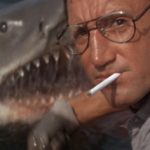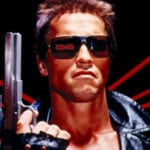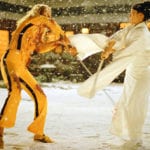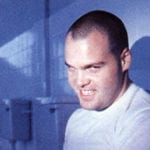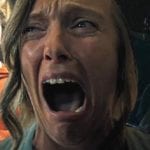 Crime
Crime  Crime
Crime  Technology
Technology 10 Hilariously Over-Engineered Solutions to Simple Problems
 Miscellaneous
Miscellaneous 10 Ironic News Stories Straight out of an Alanis Morissette Song
 Politics
Politics 10 Lesser-Known Far-Right Groups of the 21st Century
 History
History Ten Revealing Facts about Daily Domestic Life in the Old West
 Weird Stuff
Weird Stuff 10 Everyday Products Surprisingly Made by Inmates
 Movies and TV
Movies and TV 10 Actors Dragged out of Retirement for One Key Role
 Creepy
Creepy 10 Lesser-Known Shapeshifter Legends from Around the World
 Animals
Animals 10 Amazing Animal Tales from the Ancient World
 Gaming
Gaming 10 Game Characters Everyone Hated Playing
 Crime
Crime 10 Terrifying Serial Killers from Centuries Ago
 Technology
Technology 10 Hilariously Over-Engineered Solutions to Simple Problems
 Miscellaneous
Miscellaneous 10 Ironic News Stories Straight out of an Alanis Morissette Song
Who's Behind Listverse?

Jamie Frater
Head Editor
Jamie founded Listverse due to an insatiable desire to share fascinating, obscure, and bizarre facts. He has been a guest speaker on numerous national radio and television stations and is a five time published author.
More About Us Politics
Politics 10 Lesser-Known Far-Right Groups of the 21st Century
 History
History Ten Revealing Facts about Daily Domestic Life in the Old West
 Weird Stuff
Weird Stuff 10 Everyday Products Surprisingly Made by Inmates
 Movies and TV
Movies and TV 10 Actors Dragged out of Retirement for One Key Role
 Creepy
Creepy 10 Lesser-Known Shapeshifter Legends from Around the World
 Animals
Animals 10 Amazing Animal Tales from the Ancient World
 Gaming
Gaming 10 Game Characters Everyone Hated Playing
Top 10 Behind The Scenes Facts About Wes Anderson Movies
Wes Anderson’s interest in movies began when he was just a child. He would enlist the aid of his brothers to make short films using his father’s super 8mm camera. Although his parents’ divorce affected his grades, the budding filmmaker threw himself into his passion for film. He put himself through school by working as a part-time projectionist, graduating from the University of Texas with a degree in philosophy. One of Anderson’s university friends, Owen Wilson, gave him a sense of direction. The two would go on to write their first feature together, Bottle Rocket. Despite the movie’s less-than-stellar reception, Anderson’s endearing tales and quirky visuals soon found an audience.
The Texas-born director has since gone from strength to strength, producing a series of films that have achieved both commercial and critical success. His films have now grossed over $500 million at the box office and won a string of awards. Now, with the imminent arrival of his tenth feature movie, The French Dispatch, we take a look at just a few behind-the-scenes facts about Wes Anderson movies.
If you are a long-time Listverse reader, you’ll love Anderson’s movies for their quirkiness. You can even join Listverse Founder Jamie Frater (whose Top 10 Lists can be read here), following the awesomely offbeat Accidentally Wes Anderson Instagram account which highlights real-world places that look like they’ve fallen out of a Wes Anderson picture.
Top 10 Films That Portray Psychosis In Suburbia
10 Isle of Dogs Needed 22,000 Freckles
Isle of Dogs was a grueling two-year shoot. Hundreds of crew members were enlisted to make the stop-motion epic a reality, including 60 dedicated puppet makers. Every single object was handcrafted in exquisite detail, right down to the china pattern on dinner plates. Each puppet was molded around a metal skeleton, allowing animators to make subtle frame-by-frame movements.
Character expressions were highly customizable, too. Faces had modular slots which allowed the animators to quickly switch out the mouths. This way, the team could simulate various speech patterns by simply replacing the entire mouth, rather than having to continually remold parts of the face. The main characters also needed replacement heads, heaping extra work on the production team. Take the foreign exchange student Tracy Walker. The youngster’s freckles – all 297 of them – were painted onto each version of her face, one by one, to guarantee continuity between shots. Angela Kiely, head of the film’s painting department, applied around 22,000 freckles during her time on the project, using nothing but a tiny paint brush. Millions of hairs were then individually punched into the puppets, both canine and human. By the end of the shoot, the team had created over 3,000 puppets.
One of the film’s most intricate moments involved a master sushi chef preparing a poisoned meal.[1] The continuous scene shows a close-up of the chef’s hands as he strips the bones from a dead fish, chops up a crab, and batters a writhing octopus tentacle. Amounting to just one minute of stop-motion action, the scene’s sheer complexity created problems for many of the animators. “Putting gloves on in stop-motion animation is an incredibly difficult thing to do,” explained puppet wizard Andy Gent. “I think it took three animators, because it broke quite a few people to get it through the shot. Seven months later, we end up with one minute of animation.”
9 The Tenenbaums Cast Protected Wes Anderson from Gene Hackman
The Royal Tenenbaums was partly inspired by real relationships, including the divorce of Wes Anderson’s parents. Royal Tenenbaum, the New York family’s patriarch, was based on how Gene Hackman perceived he raised his own children. Given the personal nature of his performance, the actor even asked for his family’s permission before starring in the film. Unfortunately for Wes Anderson, they agreed.
Hackman would frequently come to blows with the director, walking out of the role on at least one occasion. About a third of the way through shooting, he even announced his early retirement from acting. Anjelica Huston and Gwyneth Paltrow, both of whom were terrified of Hackman, felt compelled to come to Anderson’s defense. Huston recalled one of the actor’s more interesting barbs: “Pull your pants up and act like a man.” On another occasion, he called him a “c–t”.[2]
Anderson noticed that Bill Murray wasn’t afraid to stand up to Hackman, so he asked the Ghostbusters star to hang around on set – even on his days off. “You were not scared of Gene [looking at Murray]. I noticed early on, so I started asking you to come be there.” Murray quipped, “I’ll stick up for Gene, too. The word cocksucker gets thrown around a lot. I’m gonna take that word and throw it out of this room, because it doesn’t belong here. I heard these stories, like, ‘Gene threatened to kill me today.’ Kill you? You’re in the union. He can’t kill you.”
8 Actors Suffered for their Art on The Grand Budapest Hotel
The Grand Budapest Hotel is Wes Anderson’s highest grossing film, raking in an impressive $170 million at the box office. The comedy flick features the adventures of an eccentric concierge named Gustave (Ralph Fiennes) and his young bellhop Zero (Tony Revolori). Gustave is falsely accused of murdering Madame D. – a wealthy widower who frequently stays at the Grand Budapest. Once imprisoned, Gustave works with his fellow inmates to hatch an escape plan. One of the scenes involves the group hopping over a bunch of sleeping guards. When Anderson showed the cast how he wanted the sequence performed, he accidentally booted one of the actors in the face and dislodged a fake tooth. Since the unsuspecting actor was on his back at the time, he ended up swallowing the tooth.
The escapees eventually find themselves standing in the courtyard of a dimly lit supply depot, where upon they meet up with Zero. As a final departing gesture, a thuggish prisoner named Ludwig (Harvey Keitel) slaps Zero in the face. “Good luck, kid,” he says. Anderson, Keitel, and Fiennes had already planned the scene out, unbeknownst to the actor who played Zero. On the first take, Revolori was entirely unaware that Keitel had been told to slap him. “Wes kept on saying, ‘Let’s do one more [shot], just for the pleasure of it,’” Revolori explained. “And every time Harvey would do 10 push-ups to pump himself up. I was ready to die.” The scene needed 42 takes.
7 Fantastic Mr. Fox Created Behind-the-Scenes Friction
Production on Fantastic Mr. Fox began in 2004, representing Wes Anderson’s first major foray into the world of stop-motion animation. The crew set to work building around 120 sets, 535 puppets, and thousands of unique objects. An average day’s work would typically yield just 30 seconds of usable footage. Many of the effects perfected on the film were later used for the production of Isle of Dogs, from the plumes of smoke formed from wisps of cotton wool to the swirling pools of water made from bits of plastic wrap.
Anderson tried to create an experience that was as authentic as it was spectacular. Along with screenwriter friend Noah Baumbach, the acclaimed director stayed at the Roald Dahl estate, Gipsey House, where he worked on fine-tuning the storyline. There, he spent much of his time meticulously photographing Dahl’s possessions, many of which were recreated by the animation team for the film. Mr. Fox’s office, for example, was heavily inspired by Dahl’s own Writing Hut, right down to the yellow mug he stored his pens in. Inspiration for Mr. Fox’s home – an enormous beech tree – was taken from the front cover of the book, as illustrated by Donald Chaffin. The late author’s wife, Felicity Dahl, told Anderson that the real tree was just a short walk from Gipsey House.
Given that much of the film’s scenes were staged using a team of skilled animators, Anderson felt confident in adopting a more hands-off approach to the project. He performed most of his duties from his apartment in Paris, sending e-mails outlining how each scene should play out. This meant the production team had to livestream each of the sets to Anderson’s apartment, just so they could receive his directorial input. In 2009, the film’s photography lead appeared to criticize Anderson’s “Wizard of Oz” approach to filmmaking. “I think he’s a little sociopathic. I think he’s a little O.C.D. Contact with people disturbs him. This way, he can spend an entire day locked inside an empty room with a computer.” The comment created a rift between the two, with Anderson claiming the crew member had crossed a line.
6 Bill Murray Didn’t want a Salary for Rushmore
Bill Murray is a staple of Wes Anderson’s films, appearing in all but one of the gifted filmmaker’s movies. The career-spanning relationship took off in 1997 when Murray signed on to appear in Rushmore. In fact, Murray loved the script so much that he agreed to work for free. Based on the Screen Actors Guild rules, however, the comedy actor was forced to accept a $9,000 salary.
Anderson was overawed by Murray’s presence on set, so much so that he would initially whisper his instructions to the star out of fear of being humiliated in front of the crew. In a bid to build up the fledgling director’s confidence, Murray always made a point of publicly consulting him about the direction of his character. The film was originally supposed to feature a helicopter shot, but the studio pressured Anderson into dropping the scene to save money. Murray immediately wrote Anderson a blank check to cover the cost of hiring the helicopter. The scene was abandoned anyway, and Anderson got to keep Murray’s check as a memento.
5 The Life Aquatic Crew Built a 150-Foot Cutaway of a Ship
“Let me tell you about my boat,” boasts oceanographer Steve Zissou (Bill Murray). In the backdrop lies a cross-section of an enormous 150-foot-long ship, the Belafonte. From bow to stern, every single part of the ship is displayed in immaculate detail. We pan across the peculiar research vessel, moving from a steam-filled sauna room to an experimental laboratory. There’s an engine room, observation deck, bridge area, and a deck packed with radar equipment and a mini-sub. This remarkable moment, captured in Anderson’s diorama-esque style, required a herculean effort to bring to the silver screen.
Before filming on The Life Aquatic began, Wes Anderson met with production designer Mark Friedberg. The two started spitballing ideas about how to create the cutaway of the Belafonte. Friedberg initially pitched the idea of constructing just part of the ship and then painting the remaining sections. Anderson seemed unenthused by the notion, so Friedberg suggested building half of the ship instead. Anderson’s expression remained unchanged. It then suddenly dawned on Friedberg what the director wanted: “[I asked] ‘you’d never make the whole thing, would you?’ Wes started smiling, and his producer stopped smiling.” [LINK 11]
So the crew started building the entire boat on a soundstage in Rome. It took around a year to finish the project – all for just one shot. The finished product was so enormous that it wouldn’t fit into frame. The cinematographer, Robert Yeoman, explained his predicament: “I called Panavision in a panic and asked, ‘Do you have any wider lenses? Send them immediately!’” Even with the new lenses, the crew resorted to filming the wide-angle shot through one of the doors leading into the soundstage.
4 The Darjeeling Limited was a Technical Nightmare
Large parts of Wes Anderson’s fifth feature film, Darjeeling Limited, take place on a moving train in India. This process presented considerable challenges. The crew first had to negotiate with the Indian authorities. They asked Northwestern Railways to provide a fully working train (and ten carriages), in readiness for journeying across the beautiful Indian countryside. Given the unusual nature of the request, the film crew spent some time working with Northwestern to arrange all of the necessary paperwork.
Friedberg returned to help design the train’s interior, opting to mix traditional Indian decor with the luxury aesthetic of the Orient Express. Local artisans were enlisted to decorate the carriage hallways, painting regal elephants on the walls and lining the windows with Indian fabrics. Friedberg and Anderson worked with another returnee, Robert Yeoman, to retrofit the carriages with film lights and special camera fixtures.
One major obstacle emerged while filming on a moving set, however. Anderson and co. were filming on railway tracks that were being used by other trains, meaning the movie’s scheduling had to work around the toings and froings of local commuter trains. Delays in train departures would often stop the team from filming on real track. But the crew was prepared for this eventuality. “[Wes] wanted to move fast and even if we got stuck waiting for a train to pass we would get out a long piece of lumber and start rocking the train to keep the work going,” explained the film’s producer, Lydia Dean Pilcher. “The idea was that, no matter what the logistics, we would never stop shooting, ever.”
3 Bottle Rocket Prompted Walkouts
Bottle Rocket was Wes Anderson’s very first feature film. The picture follows the escapades of two buddies, Dignan and Anthony, as they try to pull off a series of low-level heists – something the two enterprising criminals dub the 75-year plan. The story was originally told as a short in 1991, receiving critical acclaim at the Sundance Film Festival a few years later. Wes Anderson penned the script with one of his former university roommates, Owen Wilson.
Director James L. Brooks soon caught wind of the project and decided to meet with the up-and-coming filmmakers. So, in Anderson’s ramshackle apartment in Texas, the pair performed an impromptu reading of their 120-page screenplay. “We knew something was wrong two hours into it when we were only on page 40,” Wilson recalled. But Brooks took a gamble and flew Anderson and Wilson out to Hollywood to work on refining the script. Wilson later discovered that they were staying just below a plastic surgery clinic. Over time, the story was expanded upon to include a plot involving a double-crossing crime lord named Mr. Henry (James Caan). But when it finally came time to screen the feature in its entirety, things were bleak.
The screening was broadcast to a crowd of 400 moviegoers in Santa Monica. Anderson reflected on the moment when everything went south: “I was sitting in the back row with all the studio executives, and I began to see people leaving… they were leaving in groups. People don’t go to the bathroom in groups. They’re not coming back.” With a staggering 85 walkouts, Columbia Pictures had never before experienced such a disastrous screening. The studio all but abandoned the film, releasing it in only a handful of theatres across the United States, and the movie barely recouped a fraction of its $7 million budget. Thinking his career in Hollywood was over, Owen Wilson initially considered joining the marines. Regardless of its poor earnings, Hollywood giants like Martin Scorsese heralded the movie as one of the greatest works in the history of cinema.
2 Hotel Chevalier was a Passion Project
Most actors don’t sign on to do a Wes Anderson film to make money. At the 2012 Cannes Film Festival, Bill Murray spoke about the allure of working with Anderson while discussing the auteur’s seventh feature film, Moonrise Kingdom. “These are what we call art films… where you work very long hours for no money. And this is all we get: this trip to Cannes… fortunately, we’ve saved on other jobs we’ve worked on, so we can work with Wes over and over again.”[3] In a separate interview, Ed Norton briefly discussed the film’s shoestring budget. Many of the cast and crew shared a rented house for the duration of filming, actors did their own hair and makeup, the team traveled to shoots in the same cramped van, and tents were used in place of trailers. “Oh, I lost money, for sure,” Norton explained, “on every Wes Anderson movie I’ve ever done. It’s a money losing proposition.”
Hotel Chevalier was no different. Clocking in at just 13 minutes in length, the short film tells the tale of a young man’s fear of commitment. We get a brief glimpse into the dysfunctional relationship of a recently separated couple, played by Jason Schwartzman and Natalie Portman. The actors were not paid for their performances, and Wes Anderson funded part of the project with his own money. The budget was so small that Anderson ended up using some of his own possessions as props. After the two-day shoot came to a close, the director spent a week editing the scenes on his computer.
Released for free on iTunes, Chevalier is actually a prologue to The Darjeeling Limited. Portman even made a brief cameo in the main movie, traveling all the way to India to perform just half-an-hour’s worth of shoots. She spent the rest of her time sightseeing.
1 Moonrise Kingdom’s Location was Selected for Tax Reasons
Set on the fictional island of New Penzance, Moonrise Kingdom tells the story of a couple of love-struck youngsters who run away together. Anderson’s approach to choosing the movie’s setting was somewhat unconventional. He used Google Earth to perform his initial location scout, spending months trawling through virtual images of secluded coastal towns and woodland areas. Wes’ expert Googling led the team to Cumberland Island in Georgia, the Thousand Islands near New York, and parts of Rhode Island.
The crew eventually settled upon Rhode Island, with one particular house leaving an enduring impression on Anderson. “It was that house,” he explained, “combined with a 25-percent tax rebate incentive [from the state of Rhode Island] that brought us there.” [LINK 20] Anderson’s previous film, Fantastic Mr. Fox, had underperformed at the box office. This left Moonrise Kingdom with a funding shortfall, as movie execs were more wary about the prospects of Anderson’s future films. Inspiration for the movie’s 1960s set designs was drawn from other location scouts. The crew set up a soundstage in an old Linens ‘n Things store, replicating the interior of one of the scouted houses on the Thousand Islands and borrowing paintings and furnishings from others.
Meanwhile, the movie’s two child actors, Jared Gilman and Kara Hayward, were busy preparing for their very first roles. The kids become pen pals after meeting at a church pageant in 1964. To get his young performers into character, Anderson suggested they send each other e-mails. Their electronic communiqués were eventually abandoned in favor of physical letters, as Wes felt it would be more authentic to match the type of communication available during the ‘60s. On that note, Frances McDormand, who played one of the kids’ parents, was astonished to learn that the young actors had never even seen a typewriter before.
Top 10 Movies That Feel Like An Acid Trip

